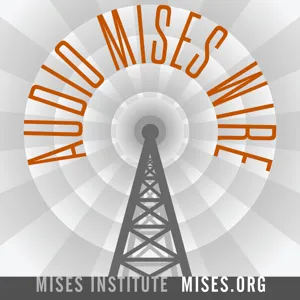Podcast Summary
Market vs Public Healthcare Systems: Market-based solutions offer efficiency, choices, and direct payments, while public systems provide apparent gratuitousness but face challenges such as long queues, time expectations, rationing, and declining quality. A hybrid approach may be the best solution.
The debate between market-based and public healthcare systems often overlooks the potential benefits and complementary roles of market solutions. While public systems may offer apparent gratuitousness, they are not entirely free as they rely on compulsory insurance premiums or taxes. Moreover, public systems face challenges such as long queues, time expectations, rationing, and declining quality due to non-market demand and supply factors. Market-based solutions, on the other hand, can provide more direct payments, greater efficiency, and more choices for consumers. However, it is essential to address common misconceptions and ensure that market solutions are implemented equitably and affordably to maximize their benefits. Ultimately, the best healthcare system may be a hybrid approach that leverages the strengths of both market and public systems.
Market-based healthcare solutions: Market-based healthcare solutions offer free access through competition, changing financing structures, and alternatives like medical subscriptions or direct payments, preventing monopolies and keeping prices low.
While political decision-makers may view additional payments for healthcare as optimization or rationalization measures, they implicitly acknowledge the superiority of market solutions. The term "free healthcare" can be misleading, and it would be more accurate to use "free of charge." Healthcare is a right, but forcing suppliers to provide services to a select group creates an imbalance. Market-based healthcare systems, with their changing financing structures, offer a rational response to uncertainty and risk. While not all events are insurable, private insurance providers offer alternatives like medical subscriptions or direct payments. Unfettered competition keeps prices low and prevents monopolies. Market solutions, aided by charitable institutions, provide quick and effective care to those in need, with no contribution required from them. As the population ages and people live longer with chronic diseases, further developing public systems is necessary. However, market-based solutions, which rely on comparison and voluntary exchanges, offer truly free access to healthcare.
Healthcare Demographics: The aging population creates a demand for healthcare solutions and presents an opportunity for entrepreneurs in a market-based system, while public healthcare systems face resource challenges that can hinder private investment and savings.
The aging population presents a significant challenge, but also an opportunity for entrepreneurs in the healthcare sector. People will continue to require access to medical services and medicines, creating a demand for solutions. Lifting institutional restrictions on capital allocation in healthcare could lead to a robust network of private suppliers, enhancing the overall supply of healthcare services. Demographics do not pose a problem in a market-based healthcare system, as individuals have the freedom to access a range of private services based on their resources or help from others. However, public healthcare systems face the challenge of dwindling resources due to demographic changes, leading to increased pressure on rationing or public expenditure. This redistribution of resources can hinder private savings and investment, making society less aware of its resourcefulness and foresight. Overall, the healthcare sector presents a significant opportunity for entrepreneurs to address the needs of an aging population and create sustainable solutions.
Public systems and technology: Technological improvements in public systems, such as healthcare, can be limited by the non-market nature of these systems, resulting in increased costs, price hikes, or rationing
While technological solutions can improve the functioning of public systems, particularly in healthcare, the non-market nature of these systems can limit their positive effects. With the dominant role of third-party payers, the insured cover only a small portion of the costs, leading to an increase in demand for advanced services and subsequent price hikes or rationing. Additionally, government agendas may impose restrictions or quality norms, increasing production costs and further limiting the impact of technology. Ultimately, this scenario can result in social tensions and decreased quality of services for an aging population.
Market-based healthcare benefits: Emphasize competition, patient choice, and cost savings in market-based healthcare to create a balanced system that leverages the strengths of both public and market-based approaches, ensuring better quality, affordability, and overall patient satisfaction.
The shift towards market-based solutions in healthcare requires a change in perspective, viewing it not just as an add-on, but as a viable alternative to the public system. To achieve this, the benefits of market-based healthcare should be emphasized, and common misconceptions clarified. This means promoting competition, patient choice, and cost savings, while addressing concerns about affordability and access for vulnerable populations. Ultimately, the goal is to create a healthcare system that leverages the strengths of both public and market-based approaches, ensuring better quality, affordability, and overall patient satisfaction.

